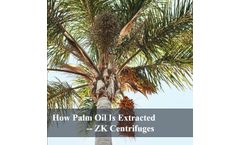Refine by
Olive Oil Articles & Analysis
15 articles found
We are welcomed by Maurice Hadders, potato grower in the countryside on the border between Flevoland and Friesland. The processing of potatoes is ongoing at full capacity, but luckily Maurice does have time to sit down and talk to us. We sit around a large round kitchen table, with coffee served in Boerenbond. We talk about the move to Schouten Optica CS. A deliberate and exciting choice, which ...
Empty glass bottles can be used for edible oils such as olive oil, peanut oil, canola oil, soybean oil, etc. The glass oil spray bottle allows easy control of oil intake for health protection. ...
It is widely distributed in nature and obtained from the fruits, seeds and germs of plants. Plant oil that are commonly used as materials of cosmetics includes peanut oil, soybean oil, linseed oil, castor oil, rapeseed oil, and so on. ...
Other applications include concentrating fruit purees, extracting olive oil and improving the quality of bakery products. Other important uses of cellulase are softening fruit, reducing roughness in dough, clarifying fruit juices, hydrolyzing roasted coffee, extracting essential oils, and enhancing the aroma and taste of food products. ...
The usual plant oil extraction and separation process (e.g. olive or palm oil, tea seed oil, etc.) involves the extraction of oil-bearing plant parts (seeds, fruits, skins) that are squeezed and milled. ...
Amphorae and barrels From ancient times, amphoras and barrels are the most comonly used containers for transporting water, wine and olive oil. The amphora being porous, has the disadvantage of losing some of its liquids by evaporation. ...
In this episode, we’re exploring the moisture content of food oils. Which do you think has more moisture – extra virgin olive oil or sesame oil? ...
Panel data for viticulture products, citrus products and olive oil for the time period 2002–2012, in the area of Iraklio, Crete, were used for the estimation of production models. ...
The nutritional properties of olive oil can be attributed to its oleic acid and phenolic compounds content, acting as natural oxidants to prevent human diseases. In particular, hydroxytyrosol has an anti-inflammatory action similar to omega 3 fatty acids from fish oil. The olive oil production was conducted ...
Olive oil mill wastewater (OOMW) is one of the most important industrial wastewaters in the world due to high organic load and phenolic compounds. ...
The production of olive oil generates two kind of waste waters: RINSING WATERS: the quantity is subject to change. ...
The effect of storing human urine with olive oil mill wastewaters (OOMW) or water bubbled with CO2 (BW), was studied. ...
Andalusia (southern Spain) is the largest olive (Olea europaea L.) oil producing region in the world. This study sought to identify the main factors influencing olive fruit production in this region, by modeling pollen release as an index of flowering intensity, field floral phenology data, and meteorological data over the fruiting season in ...
We will concentrate on the description of a wastewater recycling/reuse system that was implemented at an olive processor plant in California. Olive processing produces large amounts of high strength wastewater with significant amounts of suspended solids, oil and grease, dissolved organics and salts (brine and caustic). ...
An incubation experiment was conducted to evaluate the ameliorating role of two organic amendments—olive-mill solid wastes and compost from olive-mill solid wastes- in the ecological reclamation of a lead/Zn-mine tailing collected in southern Spain. Four enzymatic activities (dehydrogenase, β,-glucosidase, urease and phosphatase) and soluble and AB-DTPA extractable Pb and Zn and were ...












